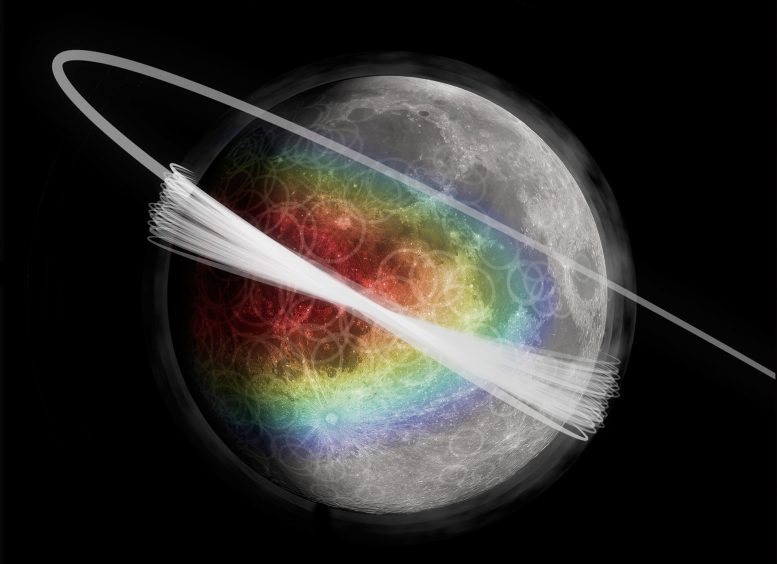
A University of Colorado Boulder study indicates that the moon is surrounded by a permanent, lopsided dust cloud that becomes denser during events like the Geminids meteor shower, causing an increase in shooting stars. Credit: NASA
Using data from NASA’s Lunar Atmosphere and Dust Environment Explorer, a new study led by University of Colorado Boulder reveals that the moon is engulfed in a permanent, but lopsided, dust cloud that increases in density when annual events like the Geminids meteor shower spew shooting stars.
“Knowledge about the dusty environments in space has practical applications,” said CU-Boulder physics Professor Mihaly Horanyi. “Knowing where the dust is and where it is headed in the solar system could help mitigate hazards for future human exploration, including dust particles damaging spacecraft or harming astronauts.”
The cloud was discovered using data from a detector on board LADEE called the Lunar Dust Experiment (LDEX) designed and built by CU-Boulder. LDEX charted more than 140,000 impacts during the six-month-long mission, which launched in September 2013 and orbited the moon for about six months. NASA’s Ames Research Center in Moffett Field, California, was responsible for spacecraft design, development, testing, and mission operations, in addition to managing the overall mission.
“The LDEX team has been painstakingly analyzing their data since the LADEE mission ended on April 18, 2014,” said LADEE project scientist at Ames, Rick Elphic. “Their results answer one of the big LADEE science questions: is there a dust component to the tenuous lunar atmosphere? And if so, why is it there?”
According to Horanyi, the cloud is primarily made up of tiny dust grains kicked up from the moon’s surface by the impact of high-speed, interplanetary dust particles. A single dust particle from a comet striking the moon’s surface lofts thousands of smaller dust specks into the airless environment, and the lunar cloud is maintained by regular impacts from such particles.
“Identifying this permanent dust cloud engulfing the moon was a nice gift from this mission,” said Horanyi, the principal investigator on LDEX and the lead author of the study. “We can carry these findings over to studies of other airless planetary objects like the moons of other planets and asteroids.”
A paper on the subject appears in the June 17 issue of Nature. Co-authors on the study include Jamey Szalay, Sascha Kempf, Eberhard Grun and Zoltan Sternovsky from CU-Boulder, Juergen Schmidt from the University Oulu in Finland, and Ralf Srama from the University of Stuttgart in Germany.
The first hints of a cloud of dust around the moon came in the late 1960s when NASA cameras aboard unmanned moon landers captured a bright glow during lunar sunsets. Several years later, Apollo astronauts orbiting the moon reported a significant glow above the lunar surface when approaching sunrise, a phenomenon brighter than the sun alone should have been able to create at that location.
Since the new findings don’t square with the Apollo reports of a thicker, higher dust cloud, conditions back then may have been somewhat different. The dust on the moon — which is dark and sticky and regularly dirtied the suits of moonwalking astronauts — was created over several billion years as interplanetary dust particles incessantly pounded the rocky lunar surface.
Many of the cometary dust particles impacting the lunar surface are traveling at thousands of miles per hour in a retrograde, or counterclockwise orbit around the sun, the opposite orbital direction of the solar system’s planets. This causes high-speed, near head-on collisions with the dust particles and the moon’s leading surface as the Earth-moon system travel together around the sun.
Reference: “A permanent, asymmetric dust cloud around the Moon” by M. Horányi, J. R. Szalay, S. Kempf, J. Schmidt, E. Grün, R. Srama and Z. Sternovsky, 18 June 2015, Nature.
DOI: 10.1038/nature14479

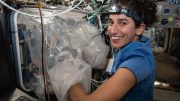
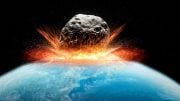
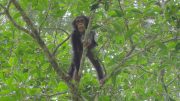

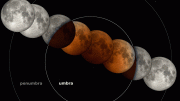
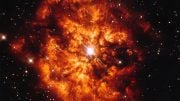
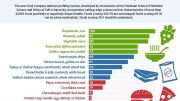

Be the first to comment on "New Research Shows Moon Engulfed in Permanent, Lopsided, Dust Cloud"